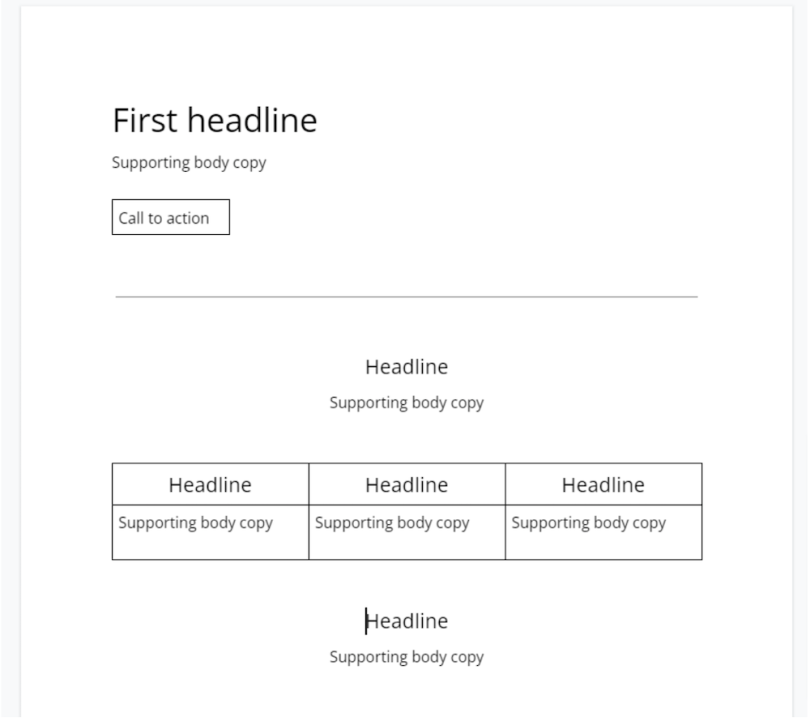You don’t have to be a copywriter to understand the value of featuring a strong message on your website. The right words can have real business impact, turning a curious website visitor into a new customer. Intentional language can foster trust between customers and a brand that lasts years. But how do you write effective website copy if you don’t consider yourself a writer?
Most people don’t have the time or desire to write. It’s hard, tedious work that even the smartest business people often struggle to master. But that difficulty doesn’t disqualify anyone from writing. So, to get the benefits of great copy, even people who hate writing must eventually face the blank page.
I drafted this article to take some of the pressure off and to equip you with copywriting tactics that entrepreneurs of all writing skill levels can apply to great effect. The key theme that threads this article is simple: The more preparation you do up front, the easier copywriting is when it’s time to sit down and type.
4 Website Copywriting Tactics for Non-Writers
- Never write from a blank page.
- Gather customer language.
- Don’t write more than you need to.
- Write short (and in frameworks).
1. Never Write From a Blank Page
The most difficult and least effective way to write copy is to begin with a blank page. Before you start writing, you’ll want to have three things: a doc containing customer language, plug-and-play writing frameworks, and an outline.
We’ll look at what I mean by customer language and frameworks in the next few sections. For now, let’s discuss your outline.
The day before you sit down to write, open some of your favorite websites and consider how these brands structure the information on their site. Most modern websites lay out information similarly, with the use of short headlines, followed by a sentence or two of body copy to support the headline, and a call to action in the form of a button.
This pattern gets repeated down the page, sometimes with an image or gif beside the text for support. You can use this repeating structure to create a rough outline that looks like the wireframe for a website.
Use the formatting tools in your preferred word processor to create this structure, using “Headline” and “Body copy” as filler words that you’ll replace later.

Starting with an outline relieves some of the pressure of writing website copy, distilling the writing process down to a task of simply filling in the gaps. Here’s an overview of how to create a Google Docs wireframe like the one in the screenshot above.
2. Gather Customer Language
As the creator or marketer of your product, you enter the copywriting process with the curse of knowledge. You understand your product and talk about your company using language that a customer doesn’t necessarily understand or resonate with. They aren’t a company insider like you.
The most effective language to use on your website will be words, phrases, and analogies that are borrowed directly from your customers’ experience. How do you find this language?
Start by reading online reviews, whether of your own product or your competitors’. Notice the exact word choices people make in their reviews. How do customers talk about your company, services, and product lines? What emotions are at play? Does everyone talk about the same one or two features?
Make a list of the most interesting (or most commonly repeated) words, phrases, and descriptions that you find in the reviews. I usually just copy-paste my favorite terms into a spreadsheet. When you’re ready to write copy, keep the spreadsheet open on another screen. All the terms you collected can be used directly on your website or as inspiration for similar phrases. Since the word choices come straight from the minds of customers, you can bet that future customers will also understand and relate to the language.
3. Don’t Write More Than You Need to
Ask yourself one question: What do I want the reader to do with the information I’m presenting to them?
You can share a lot of things about your company or product. Most of that information isn’t necessary for the average customer to take action. So, what you choose to leave out is just as important as what you choose to say. The best copywriters filter their copy through a lens: What action do I want the reader to take? Everything you write should be in support of your answer to that question.
Once you know the action you want site visitors to take, you can work backwards to determine the information they need. This level of focus helps you emphasize the features that are most important to the reader, while leaving out extraneous details.
You can even dedicate sections of your outline to specific features and benefits you know you must highlight. As a rule, only include sections that you believe can move the needle for the purchase. You can pack the additional details on a sub-page. People who want to perform more research are willing to click to another page that dives deeper into the topic.
Write Short (and in Frameworks)
Armed with customer language and a strong outline, it’s time to think about how to frame your messaging on the page. This is probably the hardest part to teach. Writing effective copy requires some understanding of what good writing looks like.
Fortunately, you don’t have to start from scratch. You can start with existing frameworks to position your copy in memorable and impactful ways.
Language framing comes in many forms:
-
Analogy
-
Juxtaposition
-
Before / after
-
Subverted expectations
-
Visualization
-
Narrative
-
And much more
Your goal is to take boring facts and turn them into sentences that inspire curiosity and action. Fortunately, you can find ways to frame ideas by looking at some of your favorite websites.
Consider this line from Ahrefs: “With Ahrefs, you don’t have to be an SEO pro to rank higher and get more traffic.” Here, Ahrefs is framing their SEO tool as one available for everyone. You can borrow this structure for your purposes:
You don’t have to [be / have] [subject] to [verb] [benefit].
Or consider how Simplisafe talks about its new video doorbell: “Fits in anywhere, from condo to castle.” They’re using visual imagery (and juxtaposition) to make their copy more memorable. Can you achieve something similar by naming different types of customers you serve or pointing to how one benefit can be broadly applied, like in the phrase “condo to castle”?
Simplify Your Process
These are just jumping off points, inspiration for your copywriting session. It’s not easy to write clear, attention-grabbing copy. But beginning with an outline, customer language, the customer goal, and some frameworks makes the writing process a whole lot easier.





